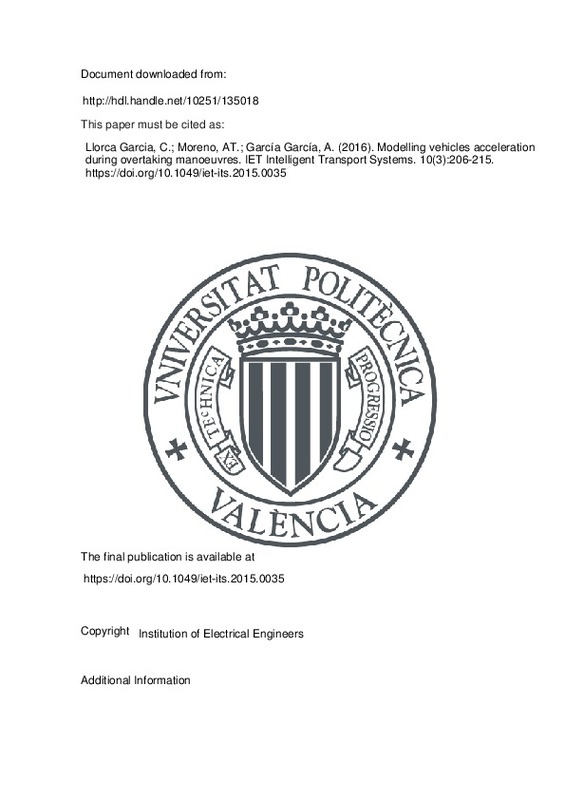Gray, R., & Regan, D. M. (2005). Perceptual Processes Used by Drivers During Overtaking in a Driving Simulator. Human Factors: The Journal of the Human Factors and Ergonomics Society, 47(2), 394-417. doi:10.1518/0018720054679443
Basilio, N., Morice, A. H. P., Marti, G., & Montagne, G. (2015). High- and Low-Order Overtaking-Ability Affordances. Human Factors: The Journal of the Human Factors and Ergonomics Society, 57(5), 879-894. doi:10.1177/0018720815583581
Morice, A. H. P., Diaz, G. J., Fajen, B. R., Basilio, N., & Montagne, G. (2015). An Affordance-Based Approach to Visually Guided Overtaking. Ecological Psychology, 27(1), 1-25. doi:10.1080/10407413.2015.991641
[+]
Gray, R., & Regan, D. M. (2005). Perceptual Processes Used by Drivers During Overtaking in a Driving Simulator. Human Factors: The Journal of the Human Factors and Ergonomics Society, 47(2), 394-417. doi:10.1518/0018720054679443
Basilio, N., Morice, A. H. P., Marti, G., & Montagne, G. (2015). High- and Low-Order Overtaking-Ability Affordances. Human Factors: The Journal of the Human Factors and Ergonomics Society, 57(5), 879-894. doi:10.1177/0018720815583581
Morice, A. H. P., Diaz, G. J., Fajen, B. R., Basilio, N., & Montagne, G. (2015). An Affordance-Based Approach to Visually Guided Overtaking. Ecological Psychology, 27(1), 1-25. doi:10.1080/10407413.2015.991641
Farah, H., Bekhor, S., & Polus, A. (2009). Risk evaluation by modeling of passing behavior on two-lane rural highways. Accident Analysis & Prevention, 41(4), 887-894. doi:10.1016/j.aap.2009.05.006
Hassan, Y., Easa, S. M., & El Halim, A. O. A. (1996). Passing sight distance on two-lane highways: Review and revision. Transportation Research Part A: Policy and Practice, 30(6), 453-467. doi:10.1016/0965-8564(95)00032-1
Wang, Y., & Cartmell, M. P. (1998). New Model for Passing Sight Distance on Two-Lane Highways. Journal of Transportation Engineering, 124(6), 536-545. doi:10.1061/(asce)0733-947x(1998)124:6(536)
Sparks, G. A., Neudorf, R. D., Robinson, J. B. L., & Good, D. (1993). Effect of Vehicle Length on Passing Operations. Journal of Transportation Engineering, 119(2), 272-283. doi:10.1061/(asce)0733-947x(1993)119:2(272)
Hanley, P. F., & Forkenbrock, D. J. (2005). Safety of passing longer combination vehicles on two-lane highways. Transportation Research Part A: Policy and Practice, 39(1), 1-15. doi:10.1016/j.tra.2004.09.001
Khoury, J. E., & Hobeika, A. G. (2012). Integrated Stochastic Approach for Risk and Service Estimation: Passing Sight Distance Application. Journal of Transportation Engineering, 138(5), 571-579. doi:10.1061/(asce)te.1943-5436.0000366
Jenkins, J. M., & Rilett, L. R. (2004). Application of Distributed Traffic Simulation for Passing Behavior Study. Transportation Research Record: Journal of the Transportation Research Board, 1899(1), 11-18. doi:10.3141/1899-02
Rakha, H., Ahn, K., & Trani, A. (2004). Development of VT-Micro model for estimating hot stabilized light duty vehicle and truck emissions. Transportation Research Part D: Transport and Environment, 9(1), 49-74. doi:10.1016/s1361-9209(03)00054-3
Polus, A., Livneh, M., & Frischer, B. (2000). Evaluation of the Passing Process on Two-Lane Rural Highways. Transportation Research Record: Journal of the Transportation Research Board, 1701(1), 53-60. doi:10.3141/1701-07
Harwood, D. W., Gilmore, D. K., & Richard, K. R. (2010). Criteria for Passing Sight Distance for Roadway Design and Marking. Transportation Research Record: Journal of the Transportation Research Board, 2195(1), 36-46. doi:10.3141/2195-05
Hegeman, G., Tapani, A., & Hoogendoorn, S. (2009). Overtaking assistant assessment using traffic simulation. Transportation Research Part C: Emerging Technologies, 17(6), 617-630. doi:10.1016/j.trc.2009.04.010
Milanés, V., Llorca, D. F., Villagrá, J., Pérez, J., Fernández, C., Parra, I., … Sotelo, M. A. (2012). Intelligent automatic overtaking system using vision for vehicle detection. Expert Systems with Applications, 39(3), 3362-3373. doi:10.1016/j.eswa.2011.09.024
Isermann, R., Mannale, R., & Schmitt, K. (2012). Collision-avoidance systems PRORETA: Situation analysis and intervention control. Control Engineering Practice, 20(11), 1236-1246. doi:10.1016/j.conengprac.2012.06.003
Petrov, P., & Nashashibi, F. (2014). Modeling and Nonlinear Adaptive Control for Autonomous Vehicle Overtaking. IEEE Transactions on Intelligent Transportation Systems, 15(4), 1643-1656. doi:10.1109/tits.2014.2303995
Llorca, C., & García, A. (2011). Evaluation of Passing Process on Two-Lane Rural Highways in Spain with New Methodology Based on Video Data. Transportation Research Record: Journal of the Transportation Research Board, 2262(1), 42-51. doi:10.3141/2262-05
Llorca, C., Moreno, A. T., García, A., & Pérez-Zuriaga, A. M. (2013). Daytime and Nighttime Passing Maneuvers on a Two-Lane Rural Road in Spain. Transportation Research Record: Journal of the Transportation Research Board, 2358(1), 3-11. doi:10.3141/2358-01
Llorca, C., Moreno, A. T., Pérez-Zuriaga, A. M., & García, A. (2013). Influence of age, gender and delay on overtaking dynamics. IET Intelligent Transport Systems, 7(2), 174-181. doi:10.1049/iet-its.2012.0147
Khoury, J. E., & Hobeika, A. (2007). Incorporating Uncertainty into the Estimation of the Passing Sight Distance Requirements. Computer-Aided Civil and Infrastructure Engineering, 22(5), 347-357. doi:10.1111/j.1467-8667.2007.00491.x
Rakha, H., Snare, M., & Dion, F. (2004). Vehicle Dynamics Model for Estimating Maximum Light-Duty Vehicle Acceleration Levels. Transportation Research Record: Journal of the Transportation Research Board, 1883(1), 40-49. doi:10.3141/1883-05
Fitzpatrick, K., Chrysler, S. T., & Brewer, M. (2012). Deceleration Lengths for Exit Terminals. Journal of Transportation Engineering, 138(6), 768-775. doi:10.1061/(asce)te.1943-5436.0000380
[-]







![[Cerrado]](/themes/UPV/images/candado.png)


